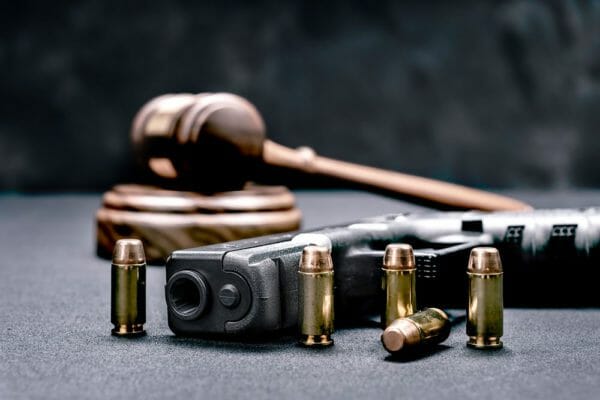
A federal hearing about the right of 18 to 20-year-old adults to carry firearms in Minnesota took place in the Eight Circuit Court of Appeals.
The case, Worth v. Jacobson, was brought by Kristin Worth, Austin Dye, the Minnesota Gun Owners Caucus (MGOC), the Second Amendment Foundation (SAF), and the Firearms Policy Coalition (FPC) against the Minnesota regulation that forbids citizens under the age of 21 from carrying firearms. The plaintiffs claim that the law violates their right to bear arms.
At the heart of the case is the question, “Who are the people?” The Second Amendment grants the people the right to bear arms. To many, the people are those 18 and over, but the government disagrees with that conclusion. The government argues adulthood doesn’t start until age 21; therefore, those under 21 are not part of “the people.”
The court seemed skeptical of the government’s position that the Second Amendment only applies to those 21 and over. At one point, a judge asked the attorneys for the defendants if someone under 21 had Fourth Amendment protections during a traffic stop. Bruen stated that the Second Amendment is not a second-class right and cannot be treated differently than other rights. If Minnesota’s argument is correct, that would mean that citizens under 21 do not have freedom of speech, the right to vote, or the right to remain silent.
The United States Constitution does set age limits on certain rights, such as a minimum age to be president or serve in Congress. The plaintiffs argued that if the founders wanted an age limit to bear arms, that age limit would be spelled out in the original text of the Second Amendment. The fact that the Founding Fathers didn’t include an age limit in the text signals to the plaintiffs that there wasn’t any intent to have an age limit for the right to bear arms.
Under the Supreme Court’s Bruen decision, for gun laws to be constitutional, they must be consistent with the original text, tradition, and history of the Second Amendment. Since there is no age limit in the original text, the burden of proof shifts to the defense to provide historical analogues from the founding era of similar restrictions.
While most believe the founding era started in 1791 when the Second Amendment was ratified, the government tries to argue it began in 1868 with the ratification of the Fourteenth Amendment. The Fourteenth Amendment did not change the meaning of the Second Amendment. It extended the restrictions on the federal government to the state governments.
In 1868, the country entered the Reconstruction Period after the Civil War. Former slave states were worried about formerly enslaved people getting guns and seeking revenge. The states passed racist “Jim Crow” gun laws to prevent freed blacks from obtaining firearms. Minnesota heavily relied on these discriminatory laws in defense of its law banning those under 21 from carrying guns. The judges seemed skeptical of Minnesota’s theories and pushed back against the defense’s reasoning.
Although anything can happen, it was a good day in court for the plaintiffs. No matter who comes out on top, this will not be the end of the battle. The loser will have an opportunity to ask for an en banc hearing where the full bench for the Eighth Circuit will hear the case or appeal to the Supreme Court.
About John Crump
John is a NRA instructor and a constitutional activist. John has written about firearms, interviewed people of all walks of life, and on the Constitution. John lives in Northern Virginia with his wife and sons and can be followed on Twitter at @crumpyss, or at www.crumpy.com.

from https://ift.tt/Jy3Eibc
via IFTTT

No comments:
Post a Comment